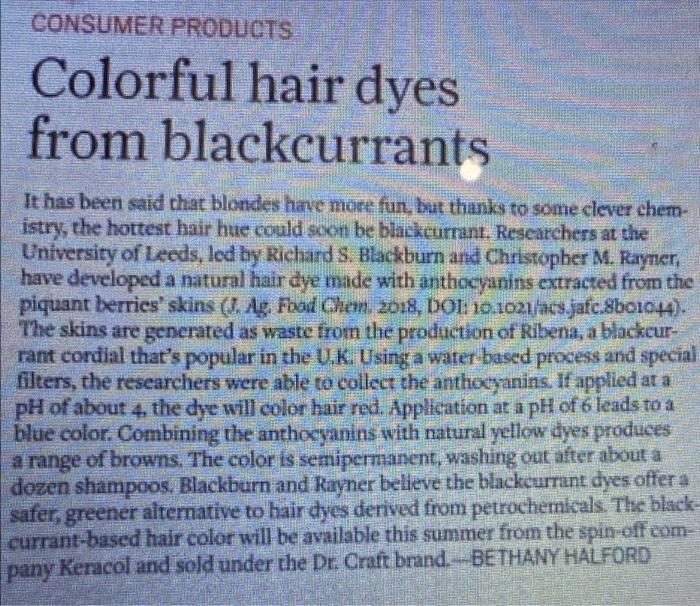Valentine's Day is coming up and chocolate is a common gift. There are many compounds in chocolate that are responsible for the different tastes and smells of different types of chocolate During the fermentation process, many chemical compounds are formed, including desirable sugars. However, sometimes other compounds that lead to undesirable characteristics are also produced One of the products of fermentation is 3-methylbutanal A - Draw the structure of 3-methylbutanal. 3 B. Draw the structure of the alcohol that was oxidized to produce 3-methylbutanal. Provide a name and classification for this alcohol. CONSUMER PRODUCTS Colorful hair dyes from blackcurrants It has been said that blondes have more fun, but thanks to some clever chem- istry, the hottest hair hue could soon be blackcurrant. Researchers at the University of Leeds, led by Richard S. Blackburn ard Christopher M. Rayner, have developed a natural hair dye made with anthocyanins extracted from the piquant berries' skins (l. AgFood Chem 2018, DOI: 10.1021/acs.jafc.8b01944). The skins are generated as waste from the production of Ribena, a blackcur- rant cordial that's popular in the U.K. Using a water-based process and special filters, the researchers were able to collect the anthocyanins. If applied at a pH of about 4, the dye will color hair red. Application at a pH of 6 leads to a blue color. Combining the anthocyanins with natural yellow dyes produces a range of browns. The color is semipermanent, washing out after about a dozen shampoos. Blackburn and Rayner believe the blackcurrant dyes offer a safer, greener alternative to hair dyes derived from petrochemicals. The black- currant-based hair color will be available this summer from the spin-off com- pany Keracol and sold under the Dr. Craft brand. BETHANY HALFORD Part 1: Observe the change in structure from the red dye to the blue dye; Name the functional group in the red dye and the name of the functional group it changed to in the blue dye. Part 2 - What could you add (provide a chemical formula) to the red dye to change it into the blue dye? Part 3 - What could you add (provide a chemical formula) to the blue dye to change it into the red dye? 11









